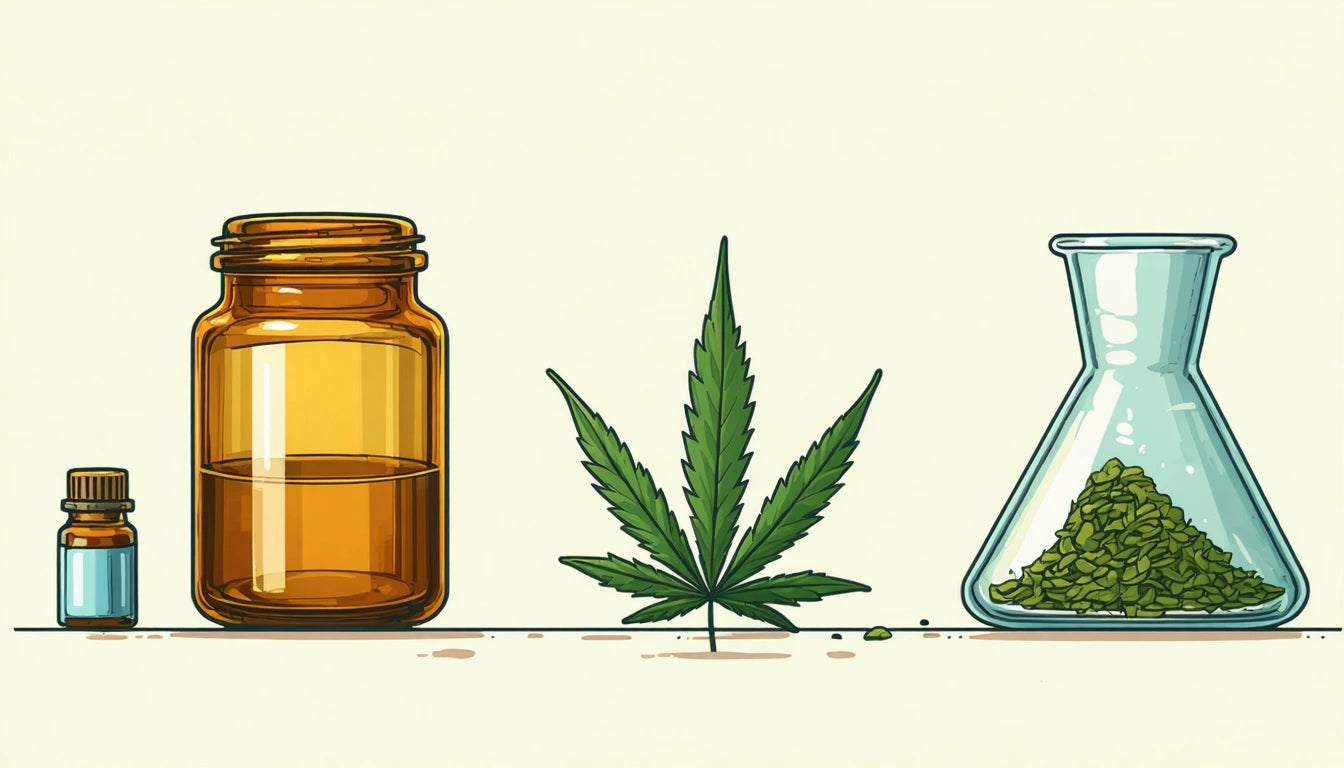Do Cannabis Plants and Products Smell? Understanding the Aromas of Growing and Consuming Marijuana
Cannabis has a distinctive aroma that varies throughout its lifecycle and differs based on consumption methods. Whether you're a home grower concerned about discretion or a consumer curious about odor management, understanding when and why cannabis plants and products smell is essential knowledge.
Cannabis Plant Aromas During Growth
One of the most common questions among new growers is "do marijuana plants smell?" The answer is yes, but the intensity and timing vary throughout the growth cycle.
Vegetative Stage
During the vegetative stage, cannabis plants produce minimal odor. Young plants in the first few weeks of growth typically emit a mild, fresh green scent similar to other leafy plants. This subtle aroma is often described as:
- Earthy
- Grassy
- Similar to garden herbs
At this stage, the smell is usually not recognizable as cannabis to most people and rarely causes odor concerns.
When Do Weed Plants Start to Smell?
Cannabis plants begin producing their characteristic aroma when they enter the flowering stage. According to research on cannabis odor causes and solutions, most plants start developing noticeable scents around 3-6 weeks into the flowering phase.
By weeks 6-8 of flowering, the smell typically intensifies significantly as buds develop and mature. This is when growers often implement odor control measures, especially in residential settings.
What Causes Cannabis Plants to Smell
The distinctive aroma of cannabis comes primarily from terpenes, aromatic compounds found in the resin glands (trichomes) that cover the flowers and surrounding leaves.
Common Cannabis Terpenes and Their Scents
Different cannabis strains produce unique terpene profiles, resulting in varied scents:
- Myrcene: earthy, musky, similar to cloves
- Limonene: citrusy, similar to lemons and oranges
- Pinene: pine-like, fresh, woody
- Caryophyllene: spicy, peppery
- Linalool: floral, lavender-like
These terpenes contribute to what people recognize as the characteristic smell of cannabis, which can range from skunky and diesel-like to sweet and fruity depending on the strain.
Consumption Methods and Their Odor Profiles
Different consumption methods produce varying levels of cannabis odor.
Does Vaporizing Weed Smell?
Vaporizing cannabis produces less odor than smoking because it heats the material at lower temperatures, releasing fewer compounds. However, it doesn't eliminate the smell entirely. Studies on minimizing cannabis odor indicate that vapor dissipates more quickly than smoke, typically clearing from a room within 30-60 minutes versus several hours for smoke.
Do weed vaporizers smell? Yes, but the odor is generally:
- Less intense than smoking
- More similar to the plant's natural terpene profile
- Shorter-lasting
- Less likely to cling to fabrics and surfaces
Smoking and Combustion
Smoking cannabis, whether through pre-rolled cones or traditional methods, produces the strongest and most persistent odor. Combustion creates smoke particles that can linger in the air and adhere to surfaces, clothing, and hair.
The smell from smoking can last anywhere from several hours to days depending on ventilation and the materials present in the environment. Smoke odors tend to penetrate porous surfaces like fabrics, carpets, and drywall, making them more difficult to eliminate.
Managing Cannabis Odors
For both growers and consumers, managing cannabis odors is often a priority, especially in shared living spaces or areas with strict regulations.
For Growers
Effective growing odor management typically includes:
- Carbon filters and exhaust systems
- Negative pressure growing environments
- Air purifiers with HEPA and activated carbon
- Odor-neutralizing gels and sprays
- Strategic timing of grows (some growers avoid summer when windows are often open)
According to research on cannabis odor effects, proper ventilation systems can reduce odor transmission by up to 90% when properly installed.
For Consumers
Consumers can minimize odors by:
- Using smoke filters or "sploofs"
- Ensuring proper ventilation
- Storing cannabis in airtight containers
- Using odor-proof bags for transportation
- Considering alternative consumption methods
The duration of cannabis odors from consumption varies widely based on the method used and environmental factors. Research on cannabis odor duration suggests that in well-ventilated areas, vaporized cannabis odors typically dissipate within an hour, while smoke can linger for 12+ hours.
Plants Commonly Mistaken for Cannabis
Several plants are often mistaken for cannabis due to similar leaf structures or aromas:
- Japanese maple (Acer palmatum)
- Spider flower (Cleome)
- Kenaf (Hibiscus cannabinus)
- Sweet basil (certain varieties)
- Okra plants
- Cassava
What plant smells like weed? Several aromatic plants can produce scents similar to cannabis, including:
- Skunk cabbage
- Certain hops varieties
- Some marigold cultivars
- Specific tomato plant varieties
These plants contain terpenes similar to those found in cannabis, creating comparable aromatic profiles.
Practical Considerations for Growers and Consumers
Understanding cannabis aromas helps both growers and consumers make informed decisions about cultivation and consumption practices. For growers, knowing when plants begin to smell allows for timely implementation of odor control measures. For consumers, recognizing how different consumption methods affect odor can help in choosing appropriate settings and techniques.
The distinctive scent of cannabis, while problematic in some contexts, is also valued by enthusiasts for indicating quality and potency. The terpenes responsible for these aromas contribute not only to the sensory experience but also to the entourage effect that influences how cannabis affects users.
As cannabis becomes more mainstream, innovations in low-odor strains and improved consumption methods continue to evolve, offering more options for discreet use while still preserving the beneficial aspects of this complex plant.











Leave a comment
All comments are moderated before being published.
This site is protected by hCaptcha and the hCaptcha Privacy Policy and Terms of Service apply.